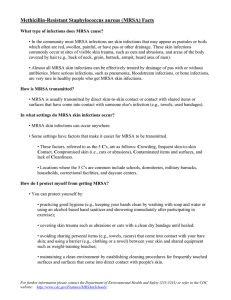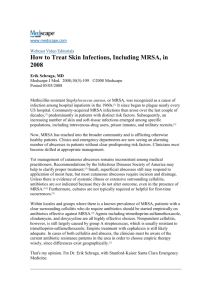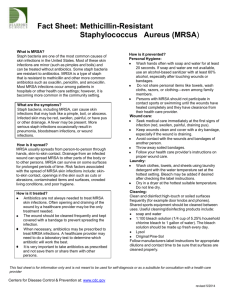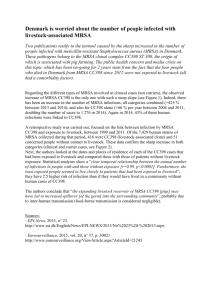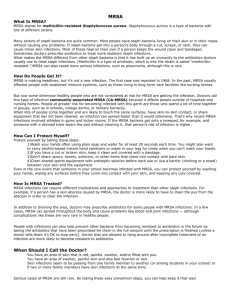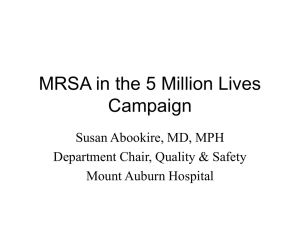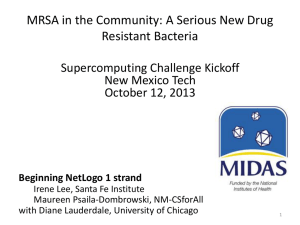SINCE 1853 Dear Coaches and Parents: Due to events in our
advertisement
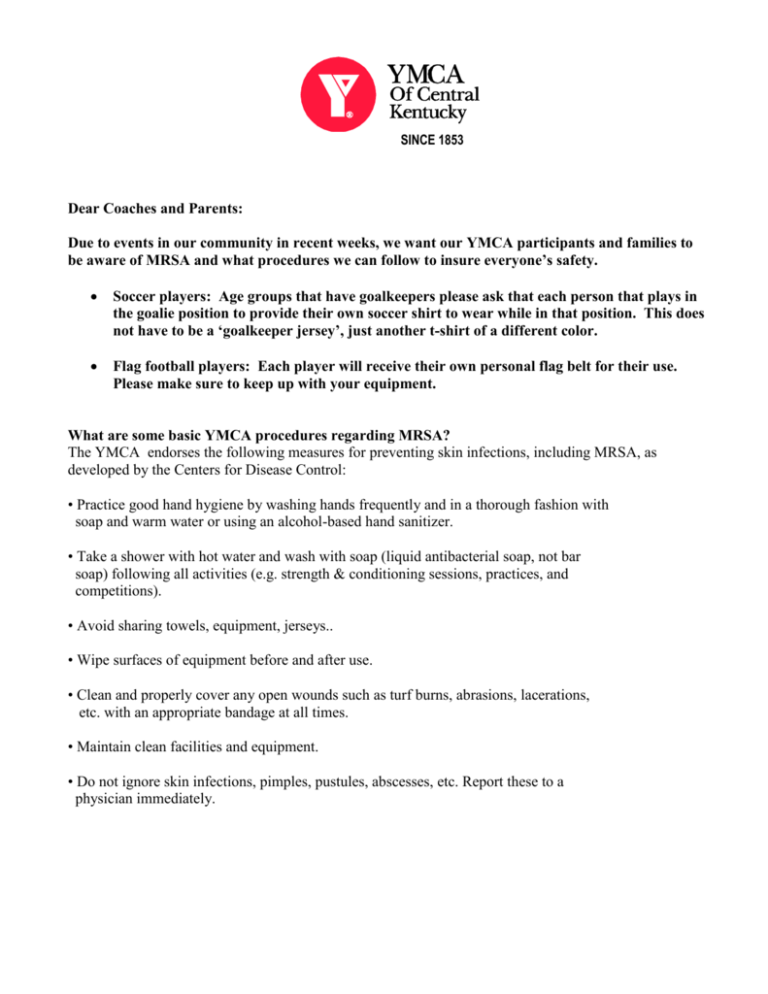
SINCE 1853 Dear Coaches and Parents: Due to events in our community in recent weeks, we want our YMCA participants and families to be aware of MRSA and what procedures we can follow to insure everyone’s safety. Soccer players: Age groups that have goalkeepers please ask that each person that plays in the goalie position to provide their own soccer shirt to wear while in that position. This does not have to be a ‘goalkeeper jersey’, just another t-shirt of a different color. Flag football players: Each player will receive their own personal flag belt for their use. Please make sure to keep up with your equipment. What are some basic YMCA procedures regarding MRSA? The YMCA endorses the following measures for preventing skin infections, including MRSA, as developed by the Centers for Disease Control: • Practice good hand hygiene by washing hands frequently and in a thorough fashion with soap and warm water or using an alcohol-based hand sanitizer. • Take a shower with hot water and wash with soap (liquid antibacterial soap, not bar soap) following all activities (e.g. strength & conditioning sessions, practices, and competitions). • Avoid sharing towels, equipment, jerseys.. • Wipe surfaces of equipment before and after use. • Clean and properly cover any open wounds such as turf burns, abrasions, lacerations, etc. with an appropriate bandage at all times. • Maintain clean facilities and equipment. • Do not ignore skin infections, pimples, pustules, abscesses, etc. Report these to a physician immediately. MRSA INFECTION F.A.Q. Sources: Centers for Disease Control; Oregon Dept. of Health Services 1. What is MRSA infection? MRSA (Methicillin-resistant Staphylococcus aureus) infection is an infection with a strain of Staphylococcus aureus bacteria that is resistant to antibiotics known as betalactams. These antibiotics include methicillin, amoxicillin, and penicillin. 2. What type of infections does MRSA cause? In the community most MRSA infections are skin infections that may appear as pustules or boils which often are red, swollen, painful, or have pus or other drainage. These skin infections commonly occur at sites of visible skin trauma, such as cuts and abrasions, and areas of the body covered by hair (e.g., back of neck, groin, armpit, etc. Almost all MRSA skin infections can be effectively treated by drainage of pus with or without antibiotics. More serious infections, such as pneumonia, bloodstream infections, or bone infections, are very rare in healthy people who get MRSA skin infections. 3. How is MRSA transmitted? MRSA is usually transmitted by skin-to-skin contact or contact with shared items or surfaces that have been in contact with someone’s infection (e.g., towels, used bandages). 4. In what settings do MRSA skin infections occur? MRSA skin infections can occur anywhere. The following settings have factors that make it easier for MRSA to be transmitted: crowding, frequent skin-to-skin contact, compromised skin (i.e., cuts or abrasions), contaminated items and surfaces and lack of cleanliness.
